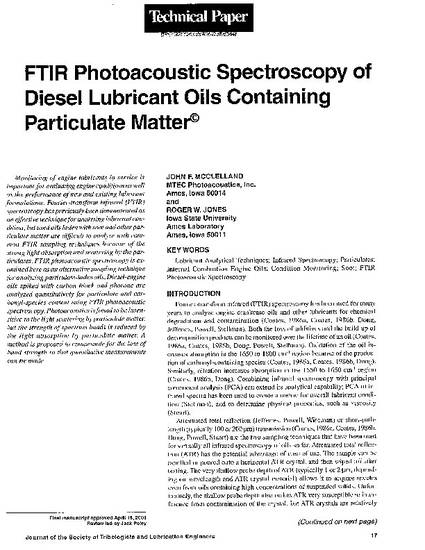
Monitoring of engine lubricants in service is important for evaluating engine conditions as well as the performance of new and existing lubricant formulations. Fourier-transform infrared (FTIR) spectroscopy has previously been demonstrated as an effective technique for analyzing lubricant condition, but used oils laden with soot and other particulate matter are difficult to analyze with common FTIR sampling techniques because of the strong lightabsorption and scattering by the particulates. FTIR photoacoustic spectroscopy is examined here as an alternative sampling technique for analyzing particulate-laden oils. Diesel-engine oils spiked with carbon black and phorone are analyzed quantitatively for particulate and carbonyl-species contentusing FTIR photoacoustic spectroscopy. Photoacoustics is found to be insensitive to the light scattering by particulate matter, but the strength of spectrum bands is reduced by the light absorption by particulate matter. A method is proposed to compensate for the loss of band strength so that quantitative measurements can be made.
Available at: http://works.bepress.com/roger_jones/19/
This article is from Lubrication Engineering 57 (2001): 17. Reprinted with permission from the Society of Tribologists and Lubrication Engineers (STLE), a not-for-profit professional society headquartered in Park Ridge, Ill., www.stle.org.